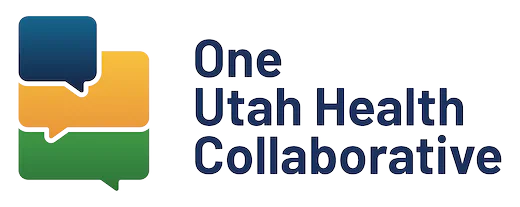Originally published by Milbank Memorial Fund.

Throughout the country, rising health care costs are constraining employer profits, decreasing employee wages, and crowding out other state spending needs. In 2022, Utah Gov. Spencer Cox prioritized the urgent need to address health care costs in his state, calling it an economic imperative.
Recognizing that true progress required collaboration, Cox appointed leaders from both the public and private sectors to work together and develop a comprehensive plan. Utah’s unique culture – and largely conservative ideology – is not conducive to relying on increased government oversight or regulation.
This collaborative approach culminated in the formation of the One Utah Health Collaborative.
The Collaborative
The Collaborative is an independent 501(c)(3) organization committed to transforming health care in Utah. Through public and private funding, a community-centric approach, and emphasis on supporting innovation, the Collaborative aligns the community on a long-term roadmap to a better health care system.
Today, the Collaborative’s small internal team successfully coordinates with more than 40 healthcare system CEOs on their Stakeholder Community Board. They also launched Utah’s first Innovation Advisory Board, which vets innovation submissions aimed at lowering costs for support consideration. This year, the Collaborative announced the formation of a Technical Advisory Group (TAG), including the state’s major insurers, to collaborate and provide data to estimate Utah’s total health care spending baseline and trends. The Technical Advisory Group members and respective organizations represent more than 95% of insured Utahns.
These groups represent what is most unique about the Collaborative’s approach explained best by the National Academy of Medicine:
What does it take to harness community resources to overcome poor health outcomes? In a word: collaboration. Just as health does not arise from a single factor, healthy communities emerge from concerted efforts that stretch across public and private sectors and break down barriers between the long-standing silos of different government agencies and programs.
Since the Technical Advisory Group’s launch in late March, members have convened four times to discuss data collection and submission processes. By year’s end, the Collaborative will be able to estimate Utah’s total health care spending baseline and trends from 2021-2023. It will be the first time in the state’s history that such data has been available – all collected through voluntary collaboration.
The Utah Model of Care
The TAG’s work is part of a broader effort the Collaborative championed to approach long-term health care transformation in the state by defining the Utah Model of Care.
After extensive research on patients, employers, the workforce, and executive stakeholders the state’s healthcare priorities were established: affordable, high quality, and accessible. These priorities form the foundation of the draft “Utah Model of Care” – a description of a healthcare system that truly delivers on these priorities. Individual and organizational feedback sessions are now underway to discuss the attributes, strategies, and metrics or accountability measures to work toward this new model in Utah over time.
The Utah Model of Care will:
- Bring alignment among all who can influence health care on what an ideal system looks like
- Provide a framework for individual and collective efforts to synergistically work towards the same end goal
- Track where the Collaborative and its stakeholders are in their evolution and how progress is being made
Using the Data to Decide
Stakeholder input and the Collaborative’s data analysis inform the Utah Model of Care. Later this year, a final cost-driver analysis report made public will include average per member per month spend, price, utilization, volume, spending per person and per unit, visits, discharges by service categories stratified by medical conditions, demographics and other social risk factors including income and geographic region. All of this data will inform future work.
The Collaborative will also publish policy briefs in the coming year taking a closer look at the following areas of study identified and prioritized by the Stakeholder Community Board and pertinent subject matter experts:
- Cost Analysis of GLP-1 Drugs in Utah
- Specialty Drug Prices & Biosimilars
- Pharmacy Rebates and the Coupons Data Gap
- Quality and Patient-experience Measures
- Potentially Avoidable Emergency Department Visits
While the Collaborative does not seek to make public policy, its data help educate a legislative subcommittee on a yearly basis to inform its policy recommendations.
The success to date inside this network can be summed up best by a member of the Collaborative’s Stakeholder Community Board: “[We must] help create a future vision for healthcare that is collaborative in nature and ultimately accountable to our community.”


